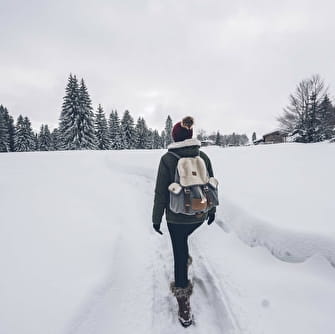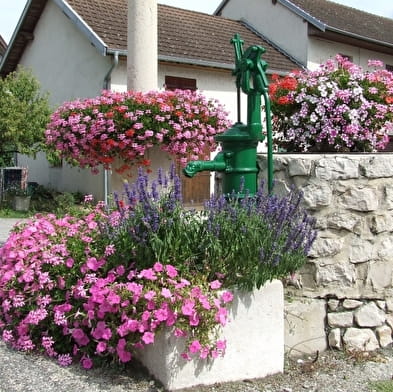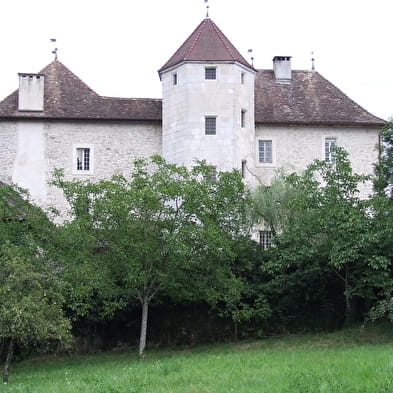
Patrimoine du village de Lavours
The church was probably built in the 18th century. In 1835 the sacristy was rebuilt and a wooden belfry was added to the gable above the entrance door. Further repairs were carried out in 1863 and 1891. In 1902 the present bell tower was built.
The church has two side chapels and is fully vaulted.
The war memorial dates from 1924. It is made up of beautiful stones bearing the inscription "in memory of the children of Lavours who died for the country 1914-1918". A poilu is represented, bayonet in the gun, weapon at the foot.
The present presbytery was built in 1902 and is made of beautiful cut stones.
The old castle of Lavours is built on a rock dominating the entrance to the village. It consists of three parts corresponding to different periods.
The oldest part consists of a residential building, an inner courtyard and two towers. The two towers are built of well-fitted, hewn rubble. In several places, one can see a coat of arms with "a chevroned shield resting on an abbot's crook".
The southernmost part, with its thick walls, was built by the castle's farmers.
The northern part of the castle is the most recent.
At the foot of the castle is a large building constructed by the monks of Hautecombe: the monks' barn or La Bovarie. This large rectangular house has a large door on three sides. The Hautecombe coat of arms is engraved on the keystone. In this vast agricultural building, the brothers were responsible for farming on behalf of the monastery.
Another castle is located in the commune of Lavours: the castle of Beaulieu, cradle of the Drujon de Beaulieu and Girod de Beaulieu families. A 16th century porch with a coat of arms can be seen. The façade dates from the 19th century and the old house at the back from the 15th century.
The commune of Lavours also has a Gallo-Roman sarcophagus. It is located in the courtyard of the Cottin house and is now used as a basin. It is a two-seater tomb with an epitaph engraved on the side. This sarcophagus was brought from Massignieu-de-Rives. Legend has it that Charles the Bald, King of France, Emperor of the West and King of Italy, was deposited in this tomb and transported to Nantua. However, it is more likely that this tomb was that of Silanius Luciolus whose house was in the commune of Massignieu-de-Rives.
Lavours had three tile factories before the Second World War. The last one, the Langlois tile factory, which closed in 1961, can still be seen.
- French
- Pets not allowed









